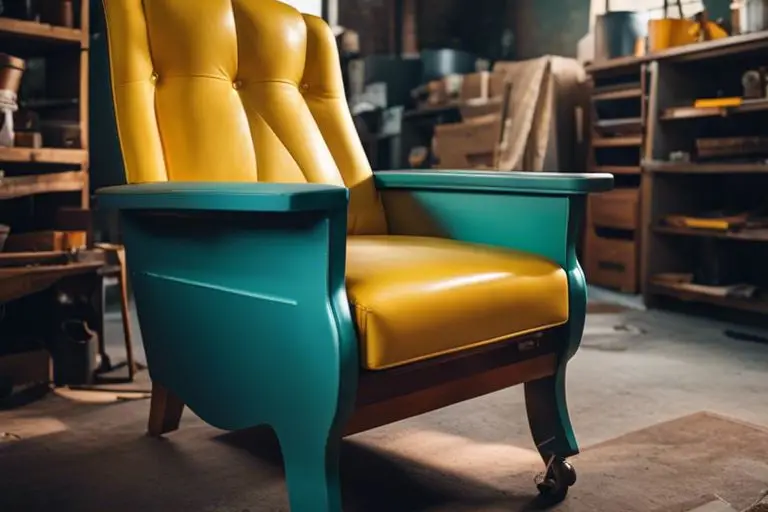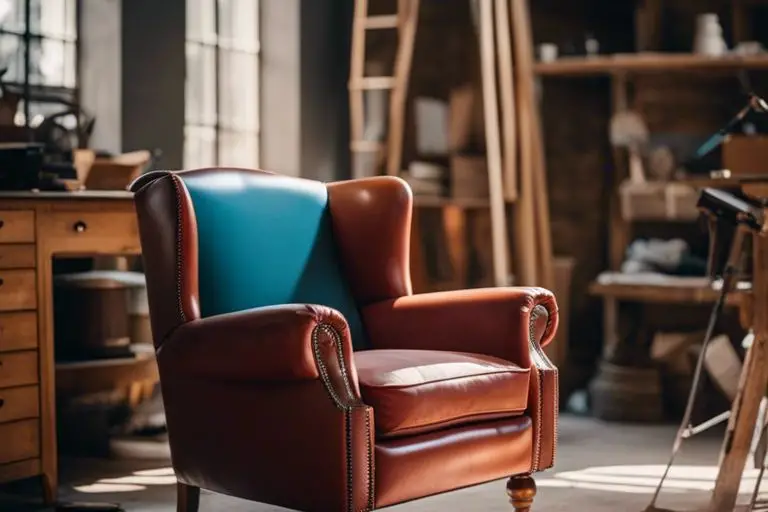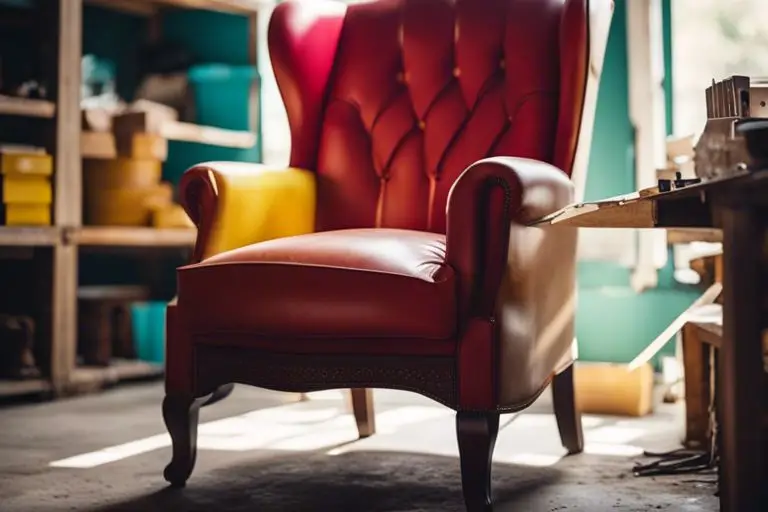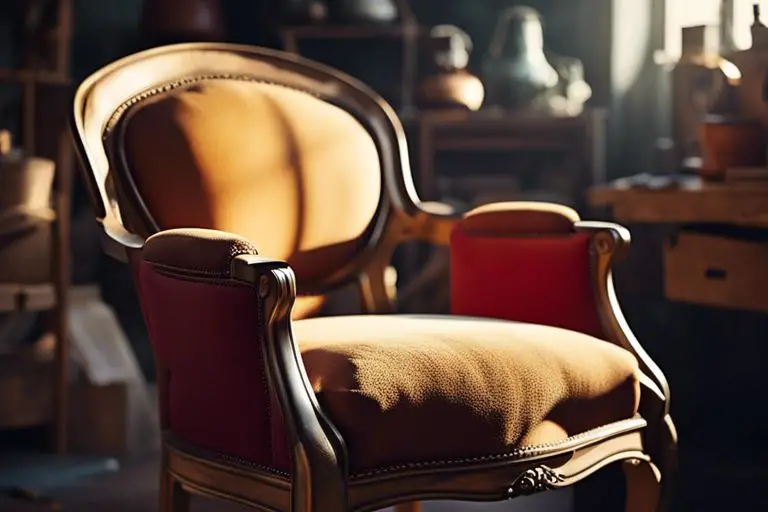Many people find joy in giving their furniture a fresh new look with a coat of paint. However, it’s important to follow proper precautions to ensure a successful outcome. Before starting, make sure to thoroughly clean the furniture and choose the right type of paint for the material. Sanding the surface and using a primer can improve adhesion and durability of the paint. Proper ventilation and protection equipment should be used to minimize health risks from fumes. Lastly, applying even coats and allowing ample drying time between layers is key to achieving a professional finish. By following these tips, you can transform your furniture with a fresh coat of paint.

Key Takeaways:
- Prepare the Surface: Sand the furniture to create a smooth surface for paint to adhere to.
- Use High-Quality Paint: Invest in good quality paint for a durable and long-lasting finish.
- Prime Before Painting: Apply a primer to prevent stains and to ensure better paint adhesion.
- Apply Thin Coats: Apply several thin coats of paint rather than one thick coat for a smoother finish.
- Allow Adequate Drying Time: Ensure each coat of paint is fully dry before applying the next coat or finishing touches.
- Protect the Finish: Apply a clear topcoat to protect the painted surface from wear and tear.
- Be Patient and Take Your Time: Rushing through the painting process can lead to mistakes and a less professional finish, so take your time and enjoy the process.

Preparing Your Workspace
You’ve decided to give your furniture a fresh new look with a coat of paint. Before you get started, it’s necessary to set up your workspace properly to ensure a smooth painting process. For a comprehensive guide on painting furniture, check out How To Paint Furniture: A Beginner’s Guide.
Choosing the Right Location
An important step in preparing your workspace is choosing the right location to paint your furniture. Select a well-ventilated area, preferably outdoors or in a well-ventilated room, to prevent fumes from accumulating. Avoid painting in humid or dusty conditions, as it can affect the paint’s finish.
Collecting Necessary Materials and Tools
Necessary materials and tools are necessary for a successful furniture painting project. Having the right supplies on hand, such as sandpaper, primer, paint, brushes, and drop cloths, will make the process smoother and more efficient. Make sure to wear appropriate safety gear, including gloves and a mask, to protect yourself from harmful fumes and chemicals.
Prepping the Furniture for Painting
One important step in painting furniture is prepping it properly to ensure a smooth and lasting finish. Before you start painting, it’s important to follow the right steps to prepare your furniture. For a detailed guide on how to paint wood furniture, check out How to Paint Wood Furniture.
Cleaning and Sanding
Prepping your furniture for painting should always begin with cleaning and sanding. Use a mild detergent and water to clean the surface thoroughly, removing any dirt, grime, or grease. Once the furniture is clean and dry, sand the surface lightly with fine-grit sandpaper to create a smooth base for the paint to adhere to. This step is crucial for ensuring a professional-looking finish and proper adhesion of the paint.
Priming for a Lasting Finish
With priming, you are creating a foundation for the paint to adhere to, ensuring a lasting and durable finish. Choose a high-quality primer that is suitable for the type of furniture you are painting. Apply the primer evenly and allow it to dry completely before applying the paint. Priming is a crucial step that can prevent stains and tannins from bleeding through the paint, providing a smooth and flawless finish.
Painting Techniques and Tips
To achieve a professional-looking finish when painting furniture, it’s necessary to have the right techniques and tips in your arsenal. Whether you’re a beginner or a seasoned pro, these guidelines will help you elevate your furniture painting game.
Selecting the Right Type of Paint
Selecting the right type of paint for your project is crucial to ensure a successful finish. Consider the material of the furniture and the desired look you want to achieve. Acrylic paints are great for beginners as they dry quickly and are easy to clean up. Chalk paints are perfect for achieving a distressed look, while latex paints work well on most surfaces and provide a durable finish.
Applying Paint for a Smooth Finish
Pertaining to applying paint for a smooth finish, preparation is key. Make sure to sand the furniture thoroughly and clean it before painting. Use a high-quality brush or roller to apply thin, even coats of paint. Allow each coat to dry completely before applying the next one to prevent streaks and drips. Lightly sand in between coats to ensure a smooth and flawless finish.
Knowing necessary painting techniques and tips will help you achieve professional-looking results and breathe new life into your furniture pieces.

Finishing Touches and Care
For How to Get a Smooth Professional Paint Finish on Furniture, the final step in painting furniture is just as important as the first. After putting in all the hard work to transform your piece, you want to ensure it stays looking its best for years to come.
Sealing and Protecting Your Paint Job
On completion of your paint job, it is crucial to seal and protect the surface to prevent chipping, scratching, or other damage. Apply a clear polyurethane or polycrylic finish to safeguard your furniture from daily wear and tear. This extra layer not only enhances the durability of the paint but also adds a professional touch to your project.
Maintenance and Cleaning Tips
An crucial aspect of caring for your painted furniture is regular maintenance and cleaning. Dust your piece frequently with a soft cloth to prevent dirt buildup, and avoid using harsh chemicals that may damage the finish. For tougher stains, gently clean with a mild soap and water solution. After cleaning, remember to dry the furniture thoroughly to prevent any moisture-related issues.
Tips for Maintaining Your Furniture:
Regularly dust your painted furniture to prevent dirt buildup.
- Use a mild soap and water solution for gentle cleaning.
- Avoid harsh chemicals that can damage the paint finish.
- Protect your furniture from direct sunlight to prevent fading.
Summing up
Painting furniture can be a fun and rewarding DIY project, but it requires proper preparation, technique, and patience. These tips for painting furniture – from choosing the right paint to sanding and priming properly, as well as using the right tools and finishes – will help you achieve a professional-looking result. Remember to choose a well-ventilated area to work in and protect your surroundings from splatters. By following these guidelines, you can transform your old furniture into a fresh and stylish piece that fits perfectly into your space. Happy painting!
FAQ
Q: Why is it important to prepare furniture before painting?
A: Properly preparing furniture before painting helps ensure better adhesion of the paint, resulting in a longer-lasting finish.
Q: What supplies are needed for painting furniture?
A: Essential supplies for painting furniture include paint, primer, sandpaper, paintbrushes, drop cloths, and a clean, dust-free workspace.
Q: How should I choose the right paint for furniture?
A: Selecting the right paint for furniture depends on the material of the piece and the desired finish. Choose a paint that is suitable for the surface and provides the desired durability.
Q: Can I paint over varnished or glossy furniture?
A: Yes, you can paint over varnished or glossy furniture, but it is important to sand the surface first to create a rough texture for better paint adhesion.
Q: What is the best technique for painting furniture?
A: The best technique for painting furniture involves applying thin, even coats of paint in the direction of the wood grain to avoid brush marks and achieve a smooth finish.
Q: How can I protect painted furniture from wear and tear?
A: To protect painted furniture from wear and tear, consider applying a clear sealant or topcoat once the paint has dried completely. This will help seal the paint and provide added durability.
Q: How long does painted furniture need to dry before use?
A: Painted furniture typically needs 24-48 hours to dry completely before it can be used. Avoid placing heavy objects on the furniture until the paint has fully cured to prevent damage.

